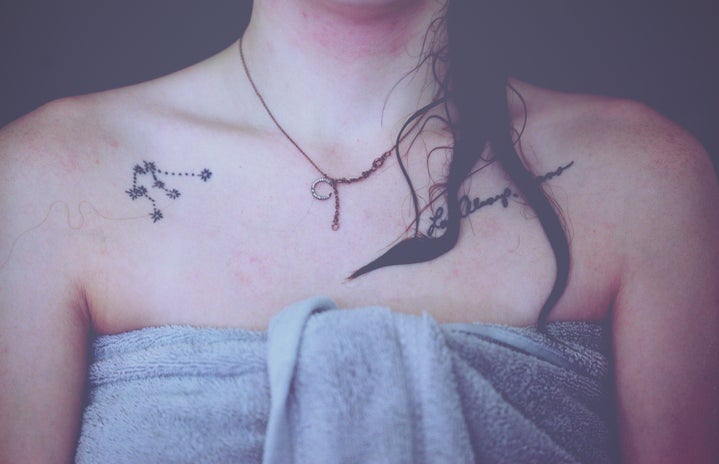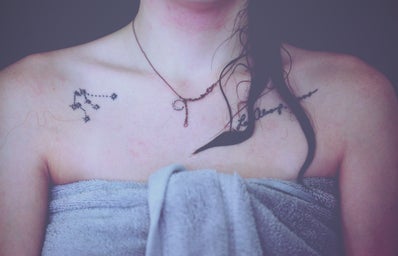“You’re so flat I could play cards on you.”
These were the kinds of things I heard in high school. Passing comments about which breasts were smaller than average and gossipy laughs about girls whose bra straps were showing. And for a few years, I thought nothing of this. But recently, society has become more attuned with how women’s bodies are perceived in the media and by the world at large, and this brought me to some questions:
Are women’s breasts inherently sexual, or are they being sexualized? How does a woman’s breast size influence how others perceive her? Is this an independent concept, or is this part of a much more complicated conversation about the way society controls women’s bodies? And if my breasts are so nonexistent that one could play cards on my chest, why have so many young men asked me for nude photos?
These are questions that I cannot answer but that I will explore in the piece that follows.
Societies vary significantly in their standards of beauty and appropriate female attire. In some nations and indigenous cultures, female toplessness is common. Conversely, in Saudi Arabia, women can be arrested for showing most parts of their body. In the United States context, women are allowed to legally show most parts of their body in public. However, this does not mean our bodies aren’t being policed.
Like many Americans, I went to a high school with a dress code. Very soon into my high school experience, it was undeniably clear that the dress code did not apply equally between genders. Male students often wore baggy basketball shorts, but the slightly shorter female equivalents were not permitted. Shirtlessness was technically not allowed, but it was commonplace for male athletes or garden club members to be shirtless on campus during their school activities. However, a young woman wearing a shirt with straps less than three inches wide would instantly be sent to the principal’s office.
And then, there are boobs. Girls develop breasts as part of puberty, and breast sizes vary significantly between young women. They are natural, normal, and serve the function to provide sustenance for an infant if the woman decides to have a child. Are breasts inherently sexual? The real answer is a complicated tightrope of biological factors surrounding attraction and ingrained social constructions. But, as this is a think piece and not a research paper, I am going to answer a resounding no. Or at least, I do not believe breasts are as much of the sex objects that society has taught us they are.
So let’s go back to this issue of a dress code. Picture this: two young women, each wearing the same v-neck shirt. One of these girl’s breasts are smaller than average, and the other’s are larger than average. Who is more likely to be dress coded? In an ideal world, they would be equally likely to get dress coded. In my ideal world, neither would deserve to be dress coded. But, recent cases are coming to light that imply that clothes are not the only factor in clothing rule enforcement.
A few years ago, there was a case where an adult woman was forced to leave her gym for violating their dress code. They claimed that the woman’s spaghetti strap tank top was against their rules. However, this was not listed in the gym’s dress code as an issue, and one of the gym’s main advertisements showed a photo of a woman wearing a very similar tank top to the one this patron was kicked out for wearing. She believes she was targeted for dress discrimination because of her large breasts.
Right now, the highest paid model in the world is Kendall Jenner, who is a size 32B in bras. Out of the thirteen highest paid female models of 2021, ten had bra sizes of a B cup or less. The average breast size in the United States is 34DD. This is a significant disparity between the women we are seeing in advertisements and the women we are seeing in our lives.
On the other end of the spectrum, one of the highest paid porn stars, Tera Patrick, has a bra size of 36 D. In general, well paid female porn performers have breasts that are average or larger than the average for most women.
So why do models have small breasts and porn stars have large breasts? Shouldn’t beauty standards be consistent? Although models and porn stars are each hailed for their physical attractiveness, their contexts elicit different body images. Society views models as classy and beautiful in a respectable, stop-and-stare kind of way. Porn stars are valued for an erotic beauty that leads to sexual arousal.
In short, we as a society view smaller breasts as pretty and professional, whereas we look at larger breasts and think of sexual desire.
This is a problem for several reasons. One, society is sexualizing a natural body part that is not inherently sexual. Yes, people can be sexually attracted to breasts and the touching of breasts in a sexual context can create arousal. However, humans can also get sexual arousal from kissing, and there is a large existing community that enjoys looking at feet for sexual pleasure. So in this line of logic, should lips and feet be viewed as sex organs as well?
The thing I find the most disturbing about the sexualization of breasts is the age that society begins policing women’s bodies at. At the high school level, underage girls are being told to cover up their breasts and shoulders fully, while they watch their male counterparts remain shirtless in similar settings. This sends a terrible message that the female anatomy is inherently sexual. It implies that it is not the fault of those who sexualize underage women but the responsibility of young women to protect themselves from being viewed in a sexual manner by dressing modestly.
My last qualm is with society’s categorization of women due to breast sizes. When we put so much emphasis on a woman’s bust, we are inadvertently creating broad categories. This goes back to the conversation about models and porn performers. We are putting smaller breasted women in the category of “pretty” and “appropriate,” and we are putting larger breasted women in the category of “sexual” and “desirable.” Not only are we creating limitations on women’s beauty, but we are also limiting all women into being objects of beauty. Every time we judge a woman’s character based on physical traits, we further the notion that a woman’s identity is tied in with her physical traits.
Women are more than just sex objects, and breasts are just a physical, functional part of a woman. I hope to see a society that takes careful consideration of this issue and one that works hard to get to know the women behind the boobs.


